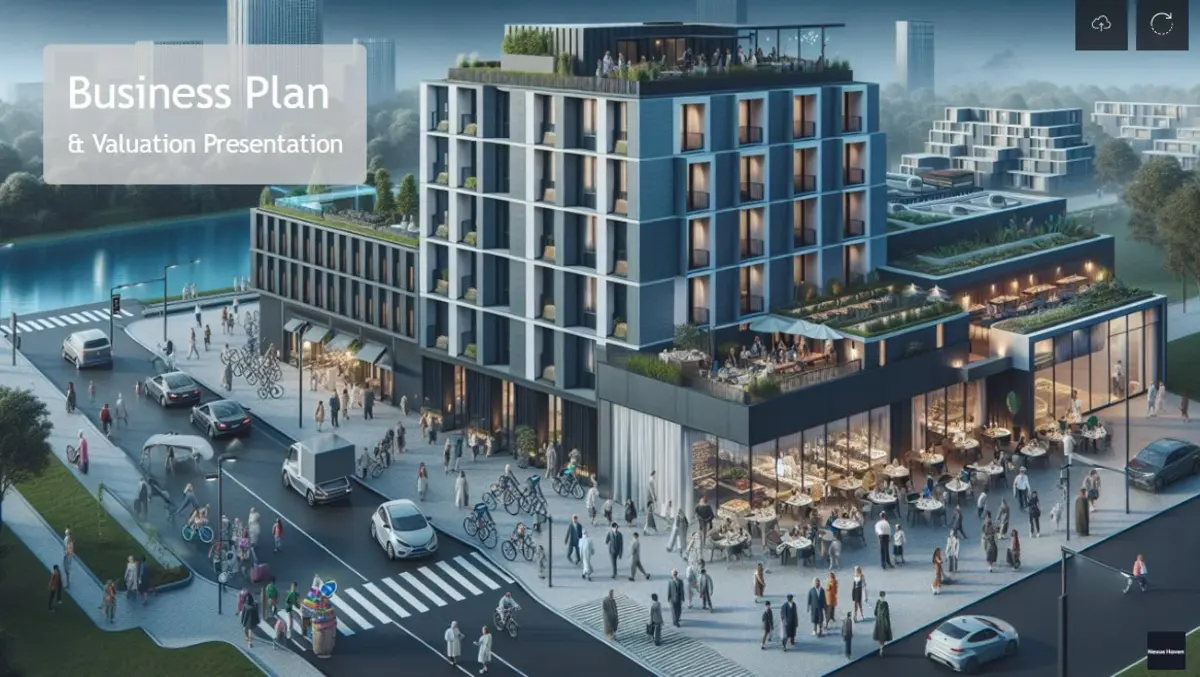Explore three powerful case study examples in the hotel industry—showcasing how boutique hotels and tech-driven brands are transforming guest experience, revenue, and resilience through innovation, AI integration, and retail-driven design.
Case Study 1: How a Boutique Hotel Could Monetize Guest Experience Through a Retail-Integrated Room Model
About the Business
The Nest Rooms is a bold, design-forward boutique hotel concept envisioned for culturally rich, experience-hungry urban neighborhoods like Austin or Copenhagen. Built around the idea that a hotel room can be more than a place to sleep, it reimagines guest spaces as living showrooms, where everything from the sheets to the soap dish is not only curated but also for sale. This boutique hotel case study exemplifies how the hotel industry can evolve beyond accommodation, transforming hospitality into an immersive, commerce-enabled lifestyle experience.
Name (Hypothetical): The Nest Rooms
Location: Urban lifestyle district (e.g., Austin, TX or Copenhagen)
Size: 40-room boutique hotel
Positioning: Design-driven, experience-first lodging
In an era where travelers increasingly seek personalization, storytelling, and value beyond a bed, boutique hotels must find new ways to thrive financially and emotionally connect with their guests. Traditional revenue levers, like food & beverage, event space, or late check-outs, offer limited upside in smaller, design-centric properties.
Boutique hotels face a unique combination of pressures:
High operational costs per square foot.
Limited space to monetize beyond the room itself.
Sky-high guest expectations around design and authenticity.
Difficulty building long-term loyalty without an ecosystem beyond the stay.
As boutique hotels seek relevance among the best hotel brands, the opportunity lies in turning the guest room into a high-converting, brand-building environment.
The Nest Rooms would embrace a retail-integrated model in which every object within the guest room is thoughtfully sourced, beautifully presented, and available for purchase. Guests don’t just enjoy the space - they interact with it, browse it, and bring pieces of it home.
Here’s how the concept works:
Product-Integrated Design: Every piece in the room, from the handmade ceramic mugs to the throw pillows, is supplied by either direct-to-consumer brands or local artisans. The room becomes a tactile catalog of curated living.
QR Code & Mobile Interface: Discreet, scannable tags on each item link guests to product details via an in-room app. With a few taps, a robe or bedside lamp can be delivered to their home post-checkout.
Commission-Based Revenue: The hotel earns a negotiated percentage (typically 15–25%) on every item purchased. Unlike minibar sales, the value here scales with aesthetics and aspiration.
Seasonal Room Themes: Each room rotates around a theme like “Sleep Well” or “Local Taste,” refreshing the space every quarter with new partner products and storytelling content.
Narrative-Driven UX: Each item comes with a story - whether it’s the journey of a weaver from Oaxaca or the carbon-neutral journey of a Scandinavian skincare brand - embedded via physical cards or digital media.
Guests become part of a story they can touch, take home, and revisit online, long after checkout.
Projected Results (Based On Market Benchmarks)
Metric | Standard Model | With Shoppable Integration | Change |
Ancillary Revenue per Room/Month $38 | $38 | $94 | +147% |
Guest Engagement (Avg. Dwell Time/Page) | - | 4.2 min | High Intent |
Return Website Visits (Post-Stay) | 6% | 21% | +250% |
Repeat Direct Bookings (12 mo) | 18% | 33% | +83% |
In short, a guest who once stayed becomes a customer who returns not necessarily to book, but to buy, to engage, to remember.
Strategic Implications
By adopting this model, The Nest becomes more than a hotel - it becomes a physical, curated lifestyle brand. It redefines hospitality as a platform for commerce, community, and content.
Key strategic advantages include:
A scalable, asset-light revenue stream from brand partnerships.
Differentiation in a crowded boutique hotel market through immersive, retail-first design.
Deeper emotional connection with guests through co-creation and narrative.
Post-stay engagement that drives brand equity, loyalty, and reorders.
This aligns tightly with how modern travelers, especially Millennials and Gen Z, consume experiences: visually, emotionally, and shareably.

Boutique hotels can dramatically increase ancillary revenue by integrating shoppable, lifestyle-forward design.
The guest experience evolves into a multi-channel journey from in-room to inbox to Instagram.
This model positions the hotel as a tastemaker and brand-builder - not just a place to sleep.
As a case study of hotel industry evolution, it provides a fresh lens on how physical space can serve both hospitality and retail.
It stands among the most forward-looking hotel AI customer service case studies, combining personalization, mobile interaction, and smart monetization.
